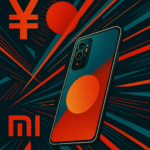NVIDIA Rubin chips
Key Points
- Rubin taped out: NVIDIA (英伟达) reports six distinct Rubin chips have been taped out and are being prepared for production, indicating a modular product family.
- Massive datacenter spend: Colette Kress (科莱特·克雷斯) projects ~¥21.9–¥29.2 trillion RMB (~$3.0–4.0 trillion USD) in datacenter infrastructure capex over the next five years.
- Product overlap: Blackwell family (GB200, GB300, Blackwell Ultra) are still shipping and will overlap with Rubin’s market entry, implying multigenerational deployments.
- Strong profitability: NVIDIA reported a GAAP gross margin of 72.4% and guided to ~73.3%, underscoring margin strength and a supply‑chain moat.

Quick snapshot — what investors, founders, and tech leaders need to know
- NVIDIA (Yīngwěidá 英伟达) announced the Rubin architecture includes six distinct chips, and all six have been taped out and are being prepared for production.
- NVIDIA CFO Colette Kress (Kěláitè Kèléisī 科莱特·克雷斯) said datacenter infrastructure capital expenditure over the next five years is on the order of ¥21.9 trillion–¥29.2 trillion RMB ($3.0–4.0 trillion USD), using an illustrative conversion of $1 = ¥7.3.
- Blackwell‑family products (GB200, GB300 and Blackwell Ultra variants) remain in shipment and will overlap with Rubin prior to Rubin’s market entry.

Resume Captain
Your AI Career Toolkit:
- AI Resume Optimization
- Custom Cover Letters
- LinkedIn Profile Boost
- Interview Question Prep
- Salary Negotiation Agent

NVIDIA Rubin chips: taped out, what that means
Tape‑out indicates the chip design is finalized and sent to fabrication.
That’s a major milestone in semiconductor development because it means the company is past design validation and ready to move toward manufacturing and yield optimization.
Rubin’s six taped‑out chips suggest a modular architecture or a product family aimed at different workload profiles — from pretraining to inference and from hyperscale to on‑premises deployments.

What NVIDIA told the Goldman Sachs technology conference
At the Goldman Sachs technology conference on September 8, 2025, Colette Kress outlined the roadmap and how Blackwell and Rubin will coexist in the market.
She highlighted that shipments of GB200 and GB300, and Blackwell Ultra variants, were ongoing into Q3.
Rubin is slated to enter the market after Blackwell‑family products have scaled, which implies an overlap period rather than a hard replacement cycle.

Find Top Talent on China's Leading Networks
- Post Across China's Job Sites from $299 / role, or
- Hire Our Recruiting Pros from $799 / role
- Qualified Candidate Bundles
- Lower Hiring Costs by 80%+
- Expert Team Since 2014
Your First Job Post

Datacenter capex projection: the multiyear opportunity
Kress reiterated NVIDIA’s estimate that datacenter infrastructure capex over the next five years is roughly ¥21.9 trillion RMB ($3.0 trillion USD) to ¥29.2 trillion RMB ($4.0 trillion USD).
She framed this as a long‑running transition to a new generation of computing platforms that will roll out over decades — not just a short cycle.
Three demand drivers Kress pointed to:
- Hyperscalers — the four largest cloud providers building new capacity.
- AI factories — large industrial users building dedicated AI infrastructure.
- Sovereign and on‑premises demand — enterprises and governments keeping compute close to data.

ExpatInvest China
Grow Your RMB in China:
- Invest Your RMB Locally
- Buy & Sell Online in CN¥
- No Lock-In Periods
- English Service & Data
- Start with Only ¥1,000

Ongoing demand for compute — pretraining and inference
NVIDIA sees demand across pretraining, fine‑tuning, and inference phases.
Importantly, inference‑oriented models now account for a meaningful portion of capacity needs — a sign that AI is moving from research to productized, operational workloads.

Installed base and replacement cycles
Customers typically depreciate hardware over about four to six years.
NVIDIA has not observed a rapid acceleration of replacement cycles.
Many operators plan to keep previous‑generation Hopper and other high‑performance gear because they still deliver useful compute.

Profitability and the supply‑chain moat
For fiscal 2026 Q2, NVIDIA reported a GAAP gross margin of 72.4% and guided to about 73.3% for Q3.
Management credits margin expansion to the ramp of Blackwell Ultra variants and product‑mix improvements tied to cycle time and cost reductions.
On supply‑chain readiness, Kress said many suppliers have built deep manufacturing knowledge over decades, boosting capacity and resilience.
Some suppliers are adding production lines and designing for flexibility, which NVIDIA sees as a competitive advantage that’s hard for rivals to replicate quickly.

Product names and roadmap summary
- Rubin architecture — six distinct chips; all reportedly taped out and preparing for production.
- Blackwell family — includes GB200 and GB300 (Blackwell Ultra variants) with ongoing shipments into Q3.

Context and implications for investors, founders, and technologists
This roadmap and the multiyear capex view signal a long runway for companies supplying:
- Accelerators and GPUs.
- Systems integrators building racks and data center appliances.
- Infrastructure vendors focused on power, cooling, and networking.
- Cloud providers and on‑premises integrators designing AI factories.
The overlap of Blackwell shipments with Rubin’s market entry suggests a multigenerational deployment pattern.
That pattern favors firms that can serve customers across migration phases — from deployment and optimization to long‑tail maintenance and refresh cycles.
Actionable takeaways
- For investors: Watch NVIDIA’s product ramps and supplier expansions for signs of durable demand and margin stability.
- For founders: Look for adjacent niches around AI infrastructure — power, cooling, software orchestration, and model serving.
- For technologists: Plan for hybrid deployments where older, still‑fast hardware coexists with next‑gen accelerators.
- For marketers: Position solutions that ease migration and optimize cost/performance across pretraining and inference.
Bottom line: NVIDIA (Yīngwěidá 英伟达) has Rubin taped out and the industry is staring at a multiyear, multitrillion‑dollar shift in datacenter infrastructure demand.
NVIDIA Rubin chips






